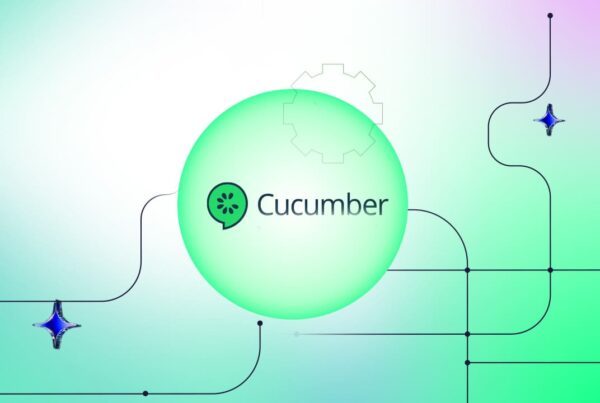Top 7 TDD Best Practices

Test Driven Development stands out as a proven strategy for ensuring cleaner code and superior outcomes from the start. This approach emphasizes the critical role of testing in crafting software that meets specifications and adapts gracefully to change.
By prioritizing tests before coding, TDD encourages a thoughtful and efficient development process, reducing bugs and increasing maintainability. Whether you are new to TDD or looking to refine your practices, our exploration into which describes TDD best practices and practical applications offers valuable insights for enhancing your development workflow and achieving higher project quality.
How to Perform The TDD Test?
Step 1: Write a Test
Start TDD by defining a test for a specific functionality before writing any code. Use a testing framework relevant to your programming language (like JUnit for Java or pytest for Python) to create this test. The test should focus on one functionality and include assertions to check the expected behavior. Initially, this test will fail, which is a crucial part of TDD, confirming the test's validity.
Step 2: Run the Test
Execute the newly written test to see it fail. This failure is expected and demonstrates that the desired functionality is not yet implemented in the codebase.
Step 3: Write the Code
Write just enough code to pass the test you have written. Focus on simplicity and meeting the test's requirements rather than completing the entire feature. Adherence to coding standards is important, but perfection in the code can wait.
Step 4: Run All Tests
With the new code written, run the entire test suite, including the test from Step 1 and any existing tests. Passing all tests ensures your new code integrates well without breaking any existing functionality. Any failures indicate a need for adjustments.
Step 5: Refactor
Now, refine your code by improving its structure, readability, and maintainability while keeping its functionality unchanged. This involves cleaning up redundancies, enhancing variable names, and following best coding practices. It's crucial to ensure all tests still pass after refactoring. Any failures suggest the refactoring introduced errors.
SUGGESTED READ - What Is TDD? Importance & Benefits
What are the TDD Best Practices?
Test Driven Development emphasizes the importance of testing, encourages simple designs, and inspires confidence. To maximize the benefits of TDD, following best practices is crucial. Here are some proven strategies to enhance your TDD process:
1. Understand Your Requirements Clearly
- Why It Matters: Clear requirements are the foundation of effective tests. Without understanding what you are building, tests can become misleading or irrelevant.
- How to Implement: Engage with stakeholders, use user stories, and ensure that requirements are well-documented and understood before writing tests.
2. Start Small
- Why It Matters: TDD is about taking small steps. Writing tests for small pieces of functionality helps in isolating problems and fixing them efficiently.
- How to Implement: Break down features into the smallest possible increments and write tests for these increments. This approach makes it easier to write code that passes the tests and simplifies debugging.
3. Keep Tests Independent and Repeatable
- Why It Matters: Tests should not rely on external conditions or the results of other tests. Independent and repeatable tests ensure reliability and consistency in results.
- How to Implement: Design tests to run in any order and under any environment. Use mock objects and test doubles to isolate the unit of code being tested.
4. Refactor with Confidence
- Why It Matters: Refactoring is integral to TDD. It allows you to improve code quality without changing its behavior. A robust test suite gives you the confidence to refactor.
- How to Implement: Regularly refactor code as you add new tests and functionality. Ensure your tests cover the behavior of your code adequately before refactoring.
5. Test the Behavior Instead of Implementation
- Why It Matters: TDD vs BDD – a lot goes on here. So, focusing on behavior rather than implementation details results in more adaptable and maintainable programs.
- How to Implement: Write tests focusing on what the code should do, not how it does it. This method allows for implementation changes without having to rewrite the tests.
6. Integrate Regularly
- Why It Matters: Continuous integration promotes code consistency and prevents changes from breaking existing functionality.
- How to Implement: Use a continuous integration (CI) system to execute your test suite with each commit. This approach helps detect and resolve integration issues at an early stage.
7. Collaborate and Review
- Why It Matters: TDD is not just a technical practice but also a collaborative one. Peer review and collaboration improve test quality and code understanding.
- How to Implement: Regularly review test cases and implementation with peers. Pair programming can also be an effective way to share knowledge and improve test coverage.
TDD Examples
TDD transcends theory through its application in various development scenarios. Below are concise examples reflecting TDD in action from the document you provided, illustrated with real-world development tasks:
Simple Web Application Development Using TDD
Challenge: Implement a greeting function that returns "Hello!".
TDD Process:
- Write a failing test for a non-existent greeting function.
- Code a simple function to return “Hello!” ensuring the test passes.
- Refine the function, maintain pass status, and expand with personalized greetings.
Result: A foundational web application feature developed with TDD, ensuring functionality from the start.
Mobile App Development with TDD
Challenge: Create a greeting feature in a mobile application.
TDD Process:
- Begin with a failing test for a missing greeting function.
- Implement the minimal necessary code (e.g., a Kotlin function returning “Hello!”).
- Continuously refactor and enhance the function for personalized user interactions.
Result: A mobile app developed iteratively with TDD, highlighting platform adaptability.
TDD in Embedded Systems Development
Challenge: Develop a basic greeting output for an embedded system.
TDD Process:
- Write a failing test for an unimplemented greeting function.
- Create minimal code to output “Hello!”, passing the initial test.
- Iterate with improvements while ensuring system constraints are met.
TDD is an iterative process that involves writing a test, implementing minimal code to pass the test, and refining the code while ensuring functionality and quality. These examples underline the TDD benefits that it brings to software development across various domains by focusing on real-world applications.
Result: An embedded system feature crafted with precision through TDD, showcasing its effectiveness in constrained environments.
Get More Insights About Testing Automation From AccelQ Experts
At ACCELQ, we help testers master the art of test automation. With our cloud-based continuous testing platform, testers can seamlessly automate API and web testing without writing a single line of code. This helps them eliminate manual testing and save a lot of time.
Get started and master ACCELQ to have powerful capabilities. Explore a range of our resources at our Academy and achieve the desired growth in your career.
Geosley Andrades
Director, Product Evangelist at ACCELQ
Geosley is a Test Automation Evangelist and Community builder at ACCELQ. Being passionate about continuous learning, Geosley helps ACCELQ with innovative solutions to transform test automation to be simpler, more reliable, and sustainable for the real world.
Discover More
 The Complete Guide to Data Masking
The Complete Guide to Data Masking
The Complete Guide to Data Masking
 Cucumber in Test Automation: Implementation, Challenges, and Future Trends
Cucumber in Test Automation: Implementation, Challenges, and Future Trends
































